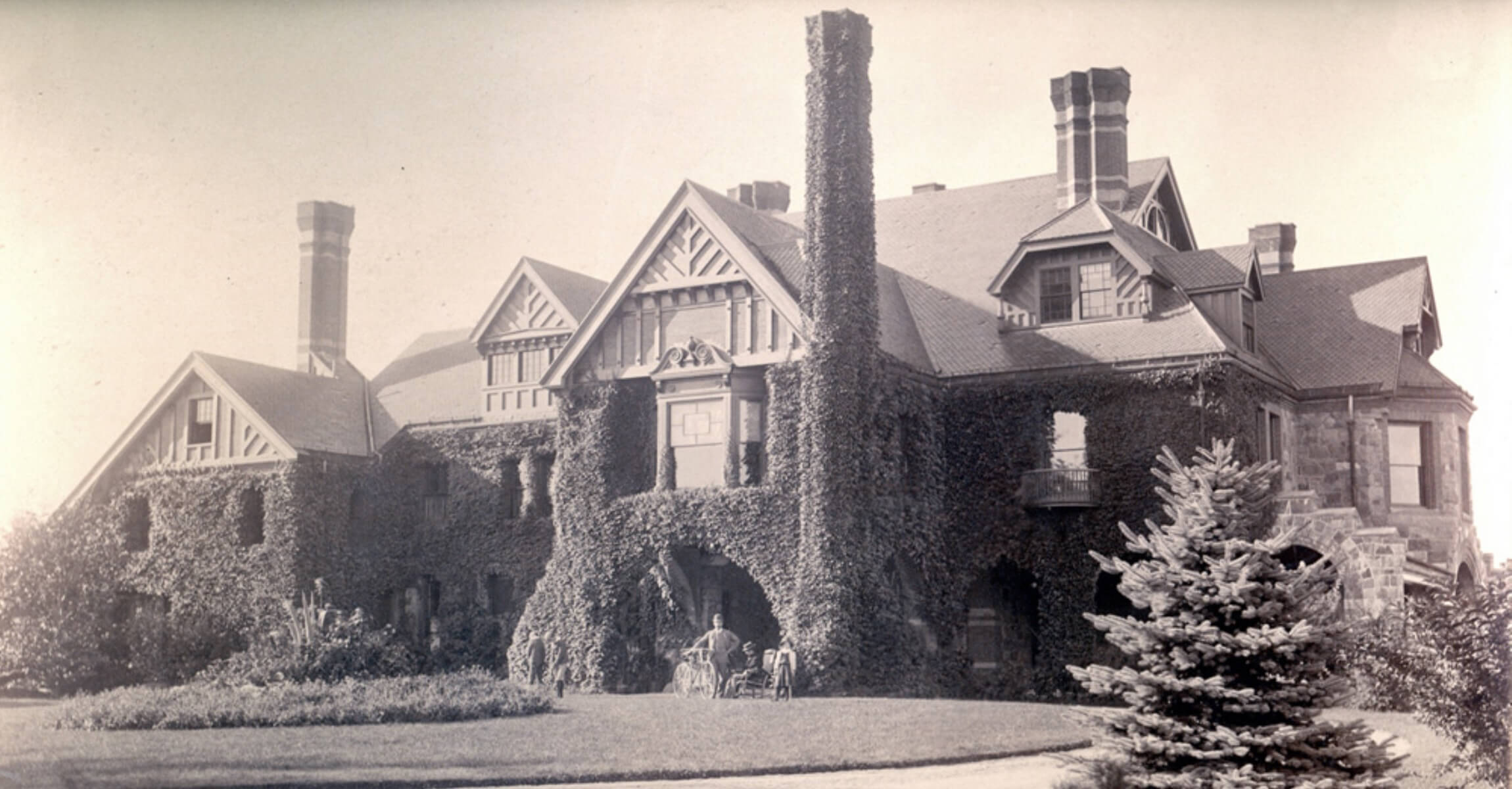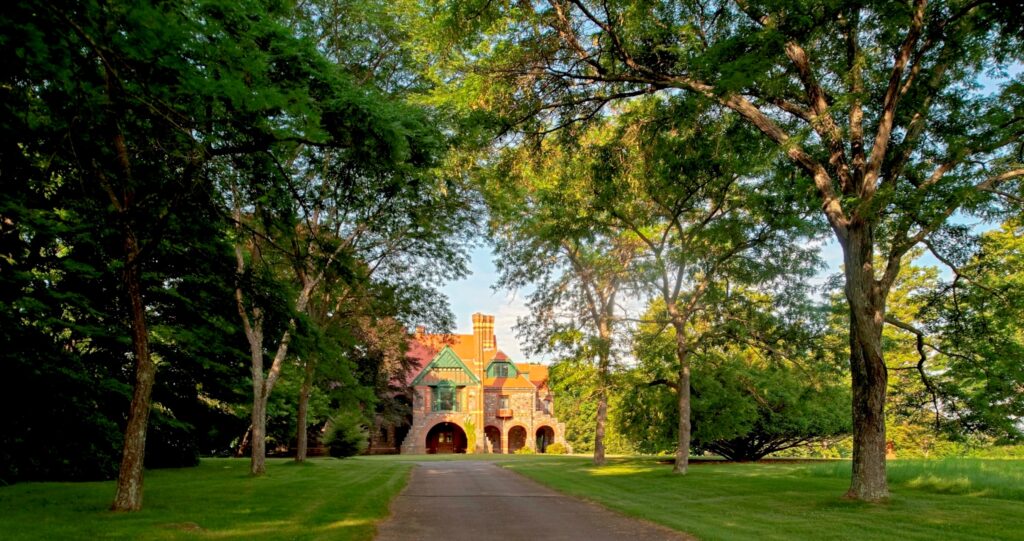 Eustis Estate
Eustis Estate
The Eustis Estate

A Magnificent Home for a Young Family
On November 7, 1876, twenty-five-year-old Edith Hemenway married twenty-six-year-old W.E.C. Eustis. A year later Edith gave birth to twin sons Frederic and Augustus. Shortly thereafter the couple began to build their family home on land given to them by Edith’s mother, Mary Hemenway.
This large estate was one of the most complete units for independent living of its time. Its acres of forest, ponds, brooks, fields, gardens, pastures, and lawns provided the needs of the family and staff. The estate had its own water supply, ice supply, dairy barn, pig barn, chicken houses, greenhouses, fruit orchards, and stables. In later years, the Eustis Estate even generated its own electricity.
W.E.C. Eustis
William Ellery Channing Eustis (1849-1932) was the young patriarch of the estate. His parents moved to Milton in the early years of his childhood, purchasing an eighteenth-century house just north of here. Called W.E.C. by his family and friends, Eustis was a Harvard-educated engineer who owned two mines and a smelting company during his lifetime. He was an avid yachtsman and, during his later years, enjoyed hunting wildlife in Florida. An amateur photographer, W.E.C. had a dark room installed in the basement of his mansion. He captured many scenes of his active family on their Milton estate.
